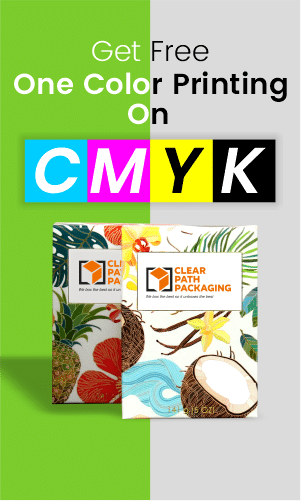Perhaps you haven’t paid attention to the packaging, but the ordinary snack wrapper or bag of chips contains a wealth of information. Of course, there are nutrition data and portion sizes designed to make you feel bad about yourself.
These days, brands often include a heartwarming tale about the company’s origins to reassure consumers that they’re eating something pure and created for them. The meaning of this spectrum of circles remains a mystery.
However, these visually beautiful circles do serve a function, even if it has less to do with nutrition, freshness, or flavor and more to do with packaging and graphic design.
The Round, Multi-color Stickers on Food Packages
It turns out that those colorful spheres have a name. There are two names for these blocks of color: “process control patches” and “printer’s color blocks.”
Whatever you choose to name them, their primary function is to check the quality of a predetermined selection of “process colors” to ensure that the package printing meets standards. They serve as a sort of final design checklist before a product is released to the public.
When blended, black, magenta, cyan, and yellow circles are common and may provide a rainbow of colors. If you have a home color printer, you’re probably already well-versed in the effectiveness of these colors.
However, those aren’t the only hues present. The primary color of certain packaging has grown to play a significant role in the company’s identity. In such circumstances, you’ll frequently see a sprinkling of circles in a secondary hue. If your professional printing credibility depends on accurately reproducing the exact shade of orange used for a Cheetos bag, you’ll want to do it right.
These circles appear like random splotches of color, but to those in the know, they convey a wealth of information about the printer’s performance. Basically, if a color is printing a little wacky compared to how it’s meant to appear on the product packaging, printers may notice the issue and make a course correction on the fly, adding more of a specific hue or subtracting it. It is common practice in modern printing for machines to be able to “read” these colors and decide whether or not a coarse adjustment is necessary.
So What If There Aren’t Any Circles?
Some packages have colorful circles representing brand colors, while others don’t use them at all. Why? It’s all a question of taste, to be honest. There is no legal necessity for these color codes on food packaging because they have no bearing on the product’s real health and safety. Once you know what the circles are for, you must give props to the printer or packager for thinking they can get by without them.
Finally, the mystery of the color circles seen at the bottom of food packaging is more related to graphic design than food. Therefore, they shouldn’t be seen as an indicator of the snack’s quality. You can be sure that looking at these is more entertaining than reading the ingredients list.
In grocery shops and supermarkets, you may often see food marked with colored dots. These dots are more than just a pretty face; they’re a vital communication between the food sector and its customers. Information regarding a product’s quality, safety, and environmental effect may be found in these documents.
This article will explain the meaning of the different colored dots found on food packaging.
Why Do We See Colored Spots on Food Labels?
Coloured dots on food packaging are primarily used to inform consumers about the product’s quality. Shoppers may quickly spot the dots because they are often shown on the front or back of the container. We’ll talk more about the standardized usage of colors and their meanings in the following section.
In the 1980s, the National Food Survey of the United Kingdom established the system of coloured dots, which many other nations have subsequently copied. The system’s goal is to make it simple for customers to learn about a product’s health benefits, allergy warnings, and ecological footprint.
Meanings of the Various Color Dots
Food packaging often has a series of coloured dots, each with a distinct significance. What do the most popular colors represent?
There are several different coloured dots used on food packaging, and each color has a specific meaning. Here are the most common colors and their meanings:
Green Dot: Useful to indicate that the product complies with the European Union’s packaging waste directive. This means that the packaging is recyclable.
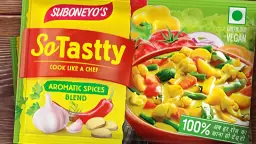
Red Dot: Useful to indicate that the product contains animal ingredients. This is particularly important for people who follow a vegetarian or vegan diet or have religious or ethical reasons for avoiding animal products.
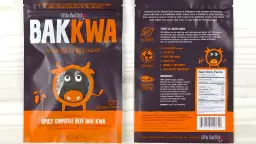
Blue Dot: Useful to indicate that the product is free from artificial color.

Yellow Dot: Useful to indicate that the product contains allergens. This is particularly important for people who have food allergies or intolerance.

Black Dot: Useful to indicate that the product is low in fat.
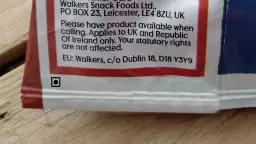
White Dot: Useful to indicate that the product is suitable for vegetarians.

Orange Dot: Useful to indicate that the product is high in sugar.

Grey Dot: Useful to indicate that the product is organic.

Brown Dot: Useful to indicate that the product is free from genetically modified organisms (GMOs).
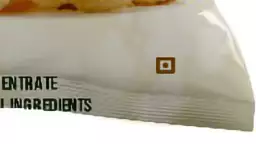
Pink Dot: Useful to indicate that the product is irradiated. This means that the product treat with ionizing radiation to kill bacteria and other microorganisms.

What Are The Reasons for Using Different Color Dots in Food Packaging?
There are several advantages to using colorful dots on food packaging. First, they aid consumers in finding items that suit their ethical or nutritional needs with minimal effort. If you’re a vegan shopper, you can tell which items don’t include any animal products just by checking for the red dot.
Second, customers may learn helpful information about the product’s allergy and nutrient content by looking at the corresponding colored dots. The health and happiness of customers will influence greatly by the food they buy and consume, and this helps them make better decisions.
Last but not least, putting colorful dots on food packaging might alert consumers to recycling and waste prevention concerns. The green dot method helps shoppers select items with a less carbon footprint, which is excellent news for the earth.
Dots of Different Colors on Food Packaging Could Cause Problems
Several possible concerns should be considered even though colored dots on food packaging are often beneficial tools for customers. To begin, customers may find it confusing as not all items must have colored dots shown on them. Sure, let’s investigate the concerns raised by the use of colorful dots on food packaging.
- Consumers may become confused if there are a lot of different dots on a product. Even if you establish the colors and their meanings, not everything has to use them. It might be confusing for consumers to compare items when some of them have color dots and others don’t.
- Some items may have too many different colored dots, which is confusing for buyers. If a product is recyclable, it may have a green dot, but if it includes animal components, it might have a red dot. This might make it hard for consumers to determine essential features.
- Furthermore, there is inconsistency in applying the color-coded dot scheme from one location to another. Colors may have identical meanings, but not all packaging have the same set of dots due to different restrictions.
- Last but not least, some have argued that colorful dots on food packaging might not be adequate to alert customers. A black dot on a product may signify that it is low in fat, but it doesn’t make it a good choice for your diet. Similarly, just because a product’s packaging has a green dot on it doesn’t guarantee it’s ecologically friendly.
Conclusion
Color dots on food packaging is crucial for conveying information to customers. Information regarding a product’s quality, safety, and environmental effect may be found in these documents. The packaging dot colors and their meanings make the system user-friendly, but certain caveats remain to remember.
Consumers can benefit from the colored dots on food packaging; they should consult additional resources when judging the foods they purchase and consume.
At Clear Path Packaging, we strive to offer high-quality custom packaging boxes that boost your branding and provide more chances to explore something better.




